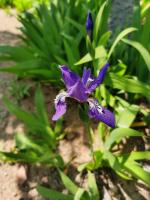Introduction
Acacia tree is a type of woody plant that is found in different parts of the world. This tree is well-known for its attractive foliage and is commonly grown as an ornamental plant. Acacias also have several other uses, including being a source of food and medicine. In this article, we will explore the different aspects of the acacia tree that make it a significant addition to any landscape.
Physical Characteristics of the Acacia Tree
The acacia tree is a medium-sized plant that can grow up to 20m tall. Its trunk is usually straight and has a diameter of up to 50cm. The tree has a characteristic flat crown with branches that spread out horizontally. The leaves of the acacia tree are dark green, and they appear feathery due to their fine divisions, which is a unique feature of the tree. Additionally, the acacia tree has sharp, thorn-like structures that grow on its branches and are used for defense against predators.
Geographic Distribution of the Acacia Tree
Acacia trees are found in different parts of the world, depending on the species. Some of the most common types of acacias include those found in Africa, Australia, and South America. Acacias thrive in areas with a warm, arid climate and are usually found in savannahs, deserts, and other dry regions. The tree is also drought-resistant, making it suitable for regions that experience minimal rainfall.
Ecological Importance of the Acacia Tree
The acacia tree plays a significant role in the ecosystem, providing food and habitat for various animals. The tree's leaves and bark are used as a source of food by several herbivores, including giraffes, elephants, and antelopes. Additionally, the acacia tree provides shelter for different animals, including birds and insects. The ants, in particular, form a mutualistic relationship with the acacia tree by protecting it from herbivores.
Uses of the Acacia Tree
Apart from its ecological significance, the acacia tree also has several other uses. The tree's wood is hard and durable, making it suitable for furniture and other construction purposes. The tree’s gum is also used in various industries, including pharmaceuticals and food products. Acacias are also used in traditional medicine and have been found to have anti-inflammatory and antimicrobial properties.
Cultivating the Acacia Tree
Acacia trees can be grown from seeds or cuttings. The tree's seeds should be planted in a sandy, well-drained soil, while the cuttings should be taken from young shoots in the spring. Acacias require a warm, sunny location and minimal watering once established. The tree is also susceptible to pests and diseases, and regular monitoring is required to ensure its health.
Conclusion
In summary, the acacia tree is a significant addition to any landscape, providing aesthetic, ecological, and commercial benefits. The tree's physical characteristics, geographic distribution, and ecological importance make it an exciting plant to cultivate. Also, the various uses of the acacia tree highlight its versatility and importance to human society.

 how many times do yo...
how many times do yo... how many planted tre...
how many planted tre... how many pine trees ...
how many pine trees ... how many pecan trees...
how many pecan trees... how many plants comp...
how many plants comp... how many plants can ...
how many plants can ... how many plants and ...
how many plants and ... how many pepper plan...
how many pepper plan...

































